|
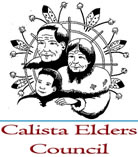 570 3rd Ave # 219 570 3rd Ave # 219
Bethel, AK 99559
(907) 543-1541
 625 C Street
Anchorage, AK 99501 625 C Street
Anchorage, AK 99501
(907)929-9200
anchoragemuseum.org
|
|
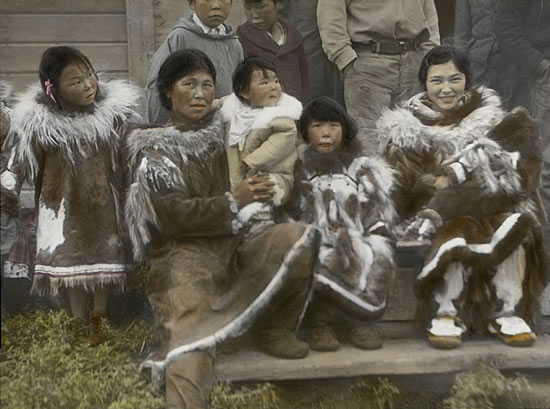
|
Courtesy, National Museum of the American Indian, Smithsonian Institution, L2287, Dr. Leuman M. Waugh, 1935 |
Women and children in fur parkas made from animals trapped and hunted on the land. |
 |
Imarmiutaat tua-i cuignilnguut-llu, kanaqliit-llu atkuutullruut maani. Nunamiutaat imkut maqanruut. Kaviaret-llu, uliiret-llu maqartut atkukellrit.
Mink, otter, and muskrat skins were used as parkas around here. Fur from land animals was warmer than other kinds of skin. Red-fox and white-fox skin parkas were warm.
--Frank Andrew, Kwigillingok |
 |
Uingekumta-gguq, ikgelengraan amilek atkuutuli, atauciungraan pegtevkenaku assirluku pikilaput. Atam-gguq tuaten piurqumta ilangurluni, kiituan-gguq atkugkanrurtuq, ayuqenrilngermeng, tamacenaungermeng.
They said that when we got a husband, even if a few animals were caught that could be used as a parka, or even if it was just one, we were told to take good care of it and put it away and not just leave it out anywhere. They said that we'd eventually have enough to make a parka, even though they were different kinds of skins.
--Theresa Moses, Toksook Bay |
Women worked long and hard sewing animal pelts into warm and sturdy parkas, hats, boots, and pants to keep their families warm and dry. Men worked equally hard supplying their wives with skins to clothe their families, noting that it was shameful to let ones spouse lack material to work on. |
Qaliluuk Parka
 |
|
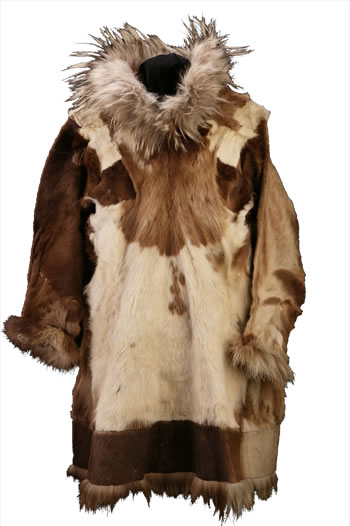
|
Man's hoodless caribou skin parka from the Yukon. Theresa Moses said: "Men's clothing, especially their hunting clothes, never fit snugly. We try to make the body large and the sleeve top large and heavy duty, thinking about when he will try to quickly put his arm through." |
Phoebe Apperson
Hearst Museum of Anthropology,
University of California, Berkeley 2-6384 |
| |
Qaliq Mink parka
 |
Qaliq/Mink parka made for Elizabeth Nicolai of Kwethluk.
Paul John said, "She would make her daughter in law a parka using her own design, like transferring her design." When a young woman entered the qasgi wearing such a parka and carrying food to a young man, all understood them to be husband and wife. |
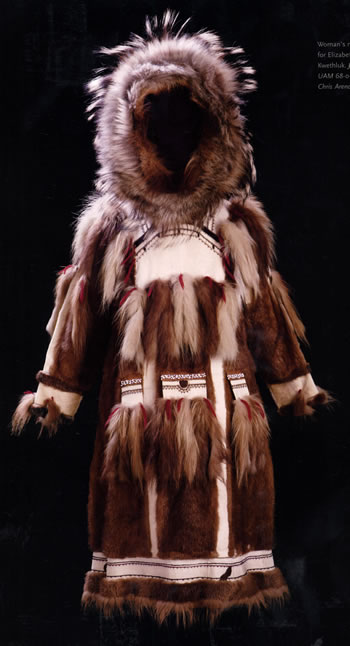 |
| |
J. Messick, 1959, UA Museum of the North 68-008-0001 |
Nasqurrun Bear Claw Headdress
 |
|
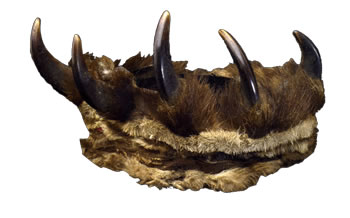
|
Bear Claw Head dress from Igushak, valued reminder of a successful hunt. Wassilie Evan recalled, "They say that brown bears have ears through the ground. When people talk aabout how dangerous they are, that bear would say, 'Ah, why do they say that we are dangerous, as if they aren't dangerous themselves.'" |
| Applegate, 1886, Department of Anthropology, Smithsonian Institution 127327 |
| |
Nasqurrun Ermine headdress

|
Ermine headdress from Bristol Bay.
|
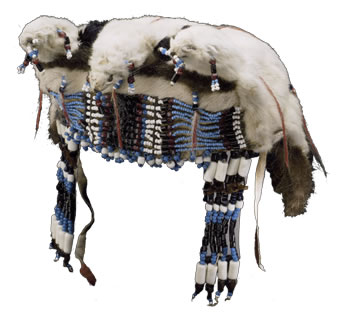 |
| |
W. J. Fisher, 1884, Department of Anthropology, Smithsonian Institution 90451 |
Aasgaak Caribou Skin Dancing Gloves
 |
|
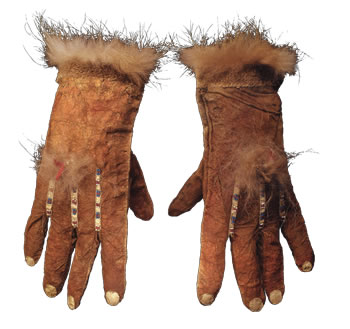
|
Caribou-skin dancing gloves from the lower Yukon River, embroidered with seal-throat-skin "fingernails."
|
| J. A. Jacobsen, 1882, Ethnologisches Museum Berlin IVA4291 |
| |
Piluguuk Boots

|
Boots made of caribou leg skins were sewn using the front of the caribou's back leg on the boot's front and the back of its front leg on the boot's back; this avoided the skin that was worn thin by the animal's habit of kneeling to forage. |
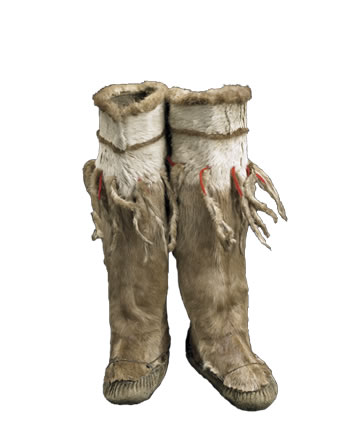 |
| |
C. L. Mckay, 1882, Bristol Bay, Department of Anthropology, Smithsonian Institution 056061 |
Aluqatkaq Beaver Castor
 |
|
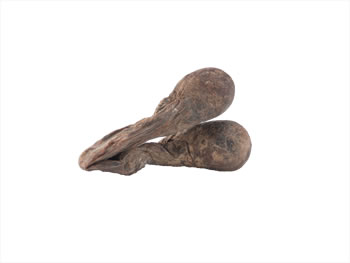
|
Beaver castor Timothy Myers recalled: "My grandmother used these beaver castors [scent glands] as medicine. The inner portion tasted like pitch from a tree, and they chewed them." |
| Gift of Ethel Ross Oliver, Anchorage Museum 1968.009.012 |
|
|

